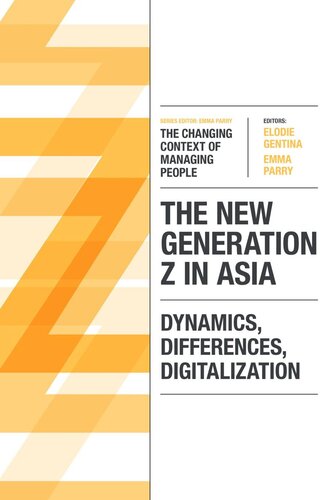Product desciption
The New Generation Z In Asia Dynamics Differences Digitalization Changing Context Of Managing People The Changing Context Of Managing People Elodie Gentina Emma Parry by Elodie Gentina; Emma Parry 9781800432215, 1800432216 instant download after payment.
Generation Z, including individuals born from the mid-1990s to the late 2000s, is said to be different from other generations before. Generation Z is said to be the generation of digital natives, with multiple identities; a worried and creative generation who value collaborative consumption; and a generation looking forward. The authors present here tentative observations of Generation Z in Asia using theoretical approaches and scientific backgrounds: the authors show how socialization theory (parents and peer group) and technology (relationship with smartphones) offer meaningful perspectives to understand Generation Z behaviors in Asia. Finally, the authors ask some key questions about dealing with Generation Z in Asia in the field of smartphone use, consumer behavior (shopping orientation), collaborative consumption (sharing), and work context. Keywords: Generation Z; digital natives, Asia; consumers; workers; research Introduction For several years, Millennials, digital natives, and other names for ‘Generation Y’ have been the focus of academic research (e.g. Business Administration, Behavioral Management, Sociology, Psychology, etc.) and even more of practitioners in companies, politicians, teachers, parents, and of course of the media. However, over the past few years, a new generation slowly has moved into focus: Generation Z, including individuals born from the mid-1990s to the late 2000s. This generation of digital natives has grown up in a digital, technology-saturated world. We cannot understand Generation Z without understanding the context in which they have grown up. Then we can examine their characteristics, their behaviur as consumers, and their behavior at work. Worldwide, young people from ‘Generation Z’ are characterized by similar consumption practices with respect to clothing, music, and media use, pointing to the evidence of a ‘global youth culture’. This presumed uniformity, however, might be inaccurate. Recent research sugges


